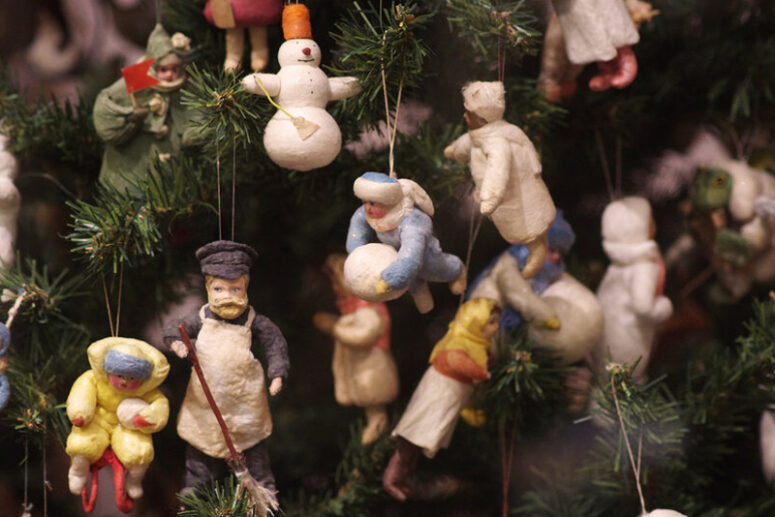
Today it seems hard to imagine Christmas holidays without a Christmas tree, decorating which has become a heartwarming family tradition. Where has the tradition of decorating Christmas trees come from, and what decorations is it associated with?
Christmas Tree in the West
The Christmas tree comes from Germany, where evergreen spruce has been revered as a symbol of unfading nature and immortality since pagan times. On New Year’s Eve, the best spruce in the forest was decorated with patches and candles, and made a center of celebration, with round dances performed around it. This tradition was abandoned for a long time after the Baptism of Germany that took place in the 8th century.
The German reformer Martin Luther is believed to be the first to decorate a fir tree for Christmas. Returning home through a forest on Christmas Eve, he was struck by the beauty of the stars in the sky, reflected by snow on sparkling tree tops. That inspired Luther so much that he brought home a small fir tree, put it on a table and decorated it with candles. On the top, he placed a figure of an angel to signify the Angel who announced the birth of the Savior to the shepherds. The angel was later replaced by the Star of Bethlehem.
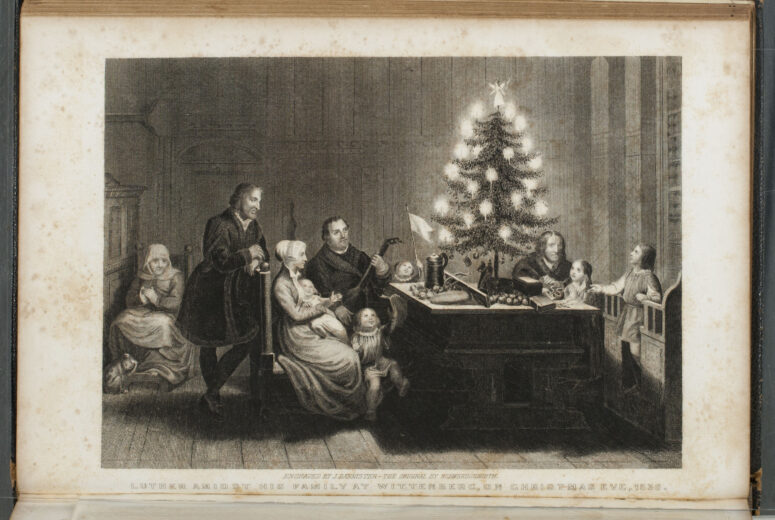
In the 17th century, small table-top Christmas trees began to be replaced by large Christmas trees. Around this time, the tradition began to spread also to other countries in Europe and America.
Besides candles, Christmas trees were decorated with sweets, gingerbread, apples, vegetables and other treats. In wealthier families, toys, books and various gifts were also hung on Christmas trees. Christmas trees were usually secretly decorated by adults on the night before Christmas and served as the main Holiday gift for children.
Christmas Tree in Russia
Christmas trees first appeared in Russia in the 18th century. They were introduced by Peter I, inspired by the Christmas celebrations that he had seen in the West. According to his decree, decorating houses and streets with evergreen branches was associated with the New Year (so as not to cause unrest in the Orthodox Church). The same decree proclaimed the Nativity of Christ as the reference epoch in Russia (previously dating its calendar from the day of the Creation of the world) and made January 1st the day the New Year celebration. After the tsar’s death, however, the magnificent New Year’s celebration ceased, and New Year trees appeared only in taverns.
The tradition of decorating Christmas trees appeared in Russia only at the beginning of the 19th century, during the reign of Nicholas I, and his wife Alexandra Fedorovna, who was of German origin. At first, the royal family decorated a Christmas tree in their private chambers. On Christmas day of 1828, the Empress organized a children’s holiday in a large dining room with several tables, on which there were Christmas trees decorated with candles, sweets, gilded apples and gingerbread. Under the trees there were toys, china, dresses and other gifts.
The fashion for Christmas trees quickly spread among the nobility. In the 1830s, confectionery shops began successfully selling Christmas trees, decorated with toys and sweets. By 1850, everyone who could afford it had Christmas trees in their homes. Wealthy people installed large Christmas trees outside, with toys and treats for all children.
Children’s crafts made of paper and cotton wool have been popular decorations at all times. From the middle of the 19th century, dedicated workshops began to produce Christmas tree decorations, strings and thin foil tinsel. Around the end of the 19th century, imported glass toys appeared on Russian Christmas trees. At first, only rich people could afford them, but soon glass decorations (balls, beads, icicles etc.) began to be made in Russia.

Post-revolutionary Time
Coming to power, the Bolsheviks tried to “reinvent” the Christmas tradition of the “Christmas tree”, but finally banned it in 1924. The children’s favourite tree returned only in 1936. All decorations symbolizing the Nativity were abolished. A red five-pointed star was placed on the top of the tree, while glass decorations reflected relevant topics and carried ideological implications of that time. For example, in the 1960s, toys were produced in the form of astronauts, rockets and communist symbols (red star, sickle and hammer etc.)
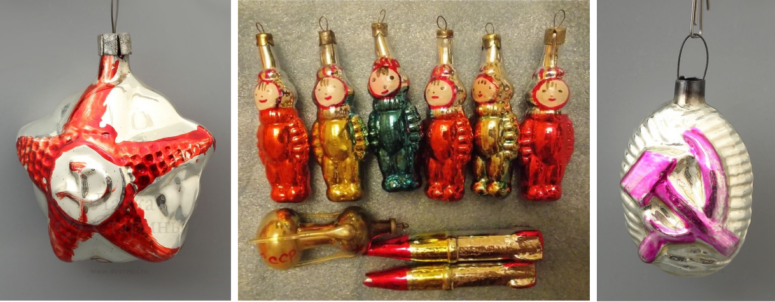
Handmade toys made of papier-mâché (a dense mass of paper, glue and plaster) were very common in the Soviet Union.

Embossed cardboard figures were made by gluing and painting two convex halves. Such figurines often represented heroes of fairy tales and also animals.
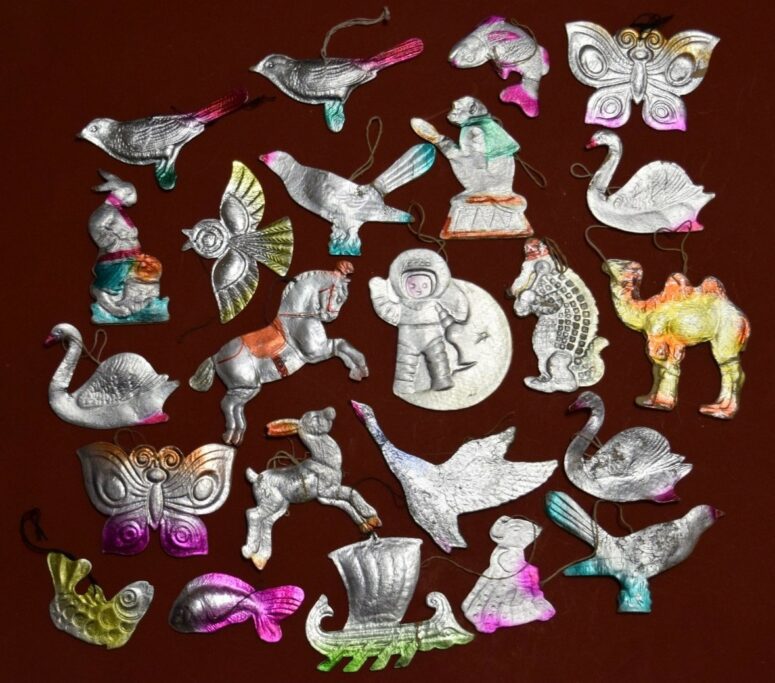
Christian symbols began to reappear on the Russian Christmas tree only after the official permission to celebrate Christmas in 1991. However, to this day the public attention in Russia is focused on the New Year celebrations, rather than Christmastide.
Christian Symbols
Christians have always assigned a symbolic meaning to Christmas tree decorations.
- The top is traditionally decorated with the Star of Bethlehem.
- The angels symbolize the messenger to the shepherds.

- Christmas balls are a modern interpretation of apples, previously used to decorate Christmas trees in memory of the fall of Adam and Eve.
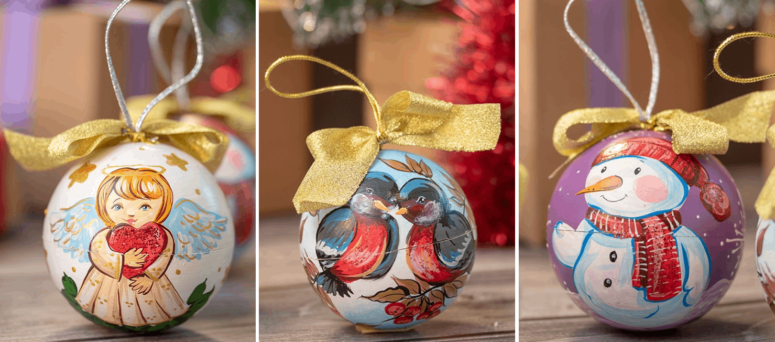
- Santa Claus or Grandfather Frost The prototype is St Nicholas the Wonderworker, known to secretly bring people gifts.
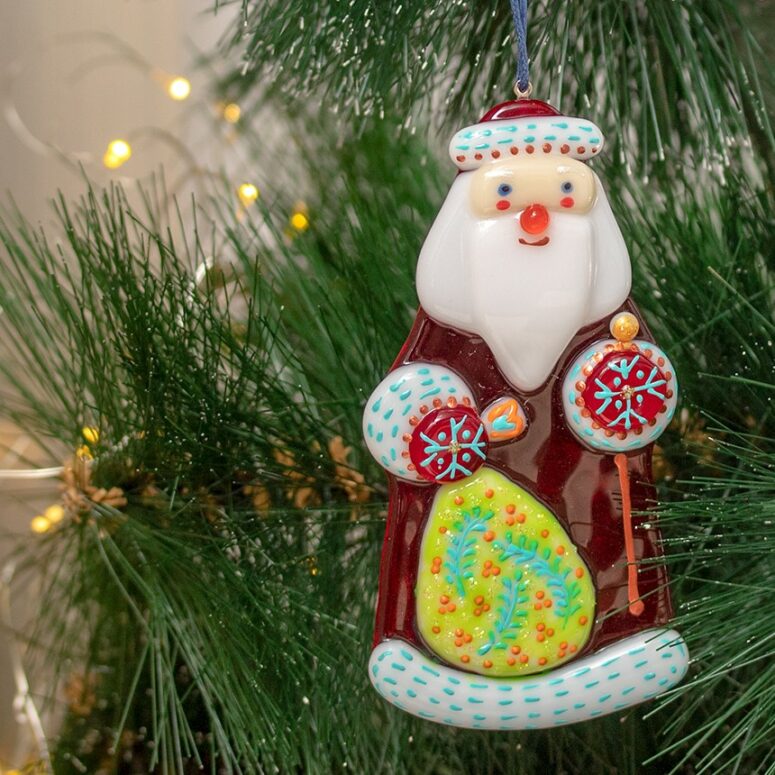
- The traditional stocking comes from the version stating that St Nicholas brought his gifts to people in stockings.

- Every great holiday in Orthodoxy is met with a solemn bell ringing, hence the traditional Christmas-tree bells.
The Nativity of Christ is a bright holiday bringing joy to millions of people. Exchanging gifts on this day is truly a wonderful tradition. However, as we prepare to celebrate the birthday of Christ, it is important not to forget to present Him with some pleasant gifts, for example, deeds of mercy and love for our neighbor.


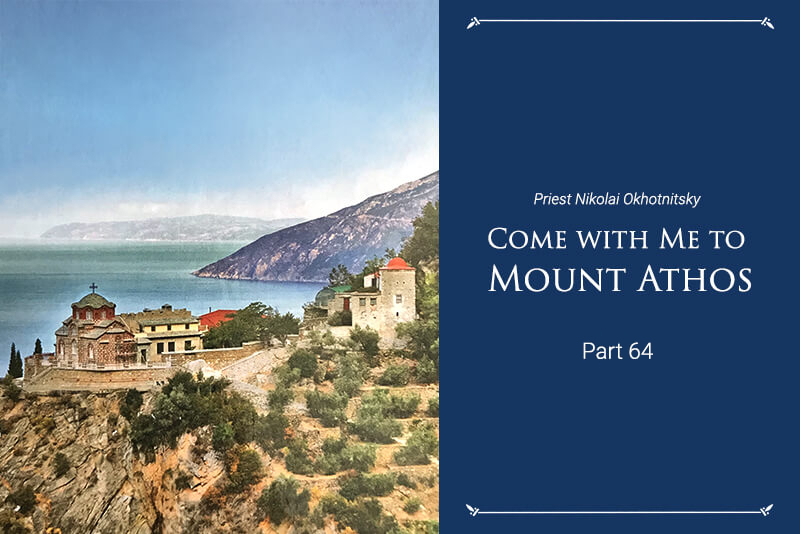


The Christmas tree is a pure Christian Tradition that came from St. Bonifatius the enlighter of the germans. When he converted the germans to christianity he told them that Christ is like a “Tannenbaum” never changing, …they used to decorate the tree with lights, straw, stars, apples…all that reminds us of paradise, and Bethlehem.